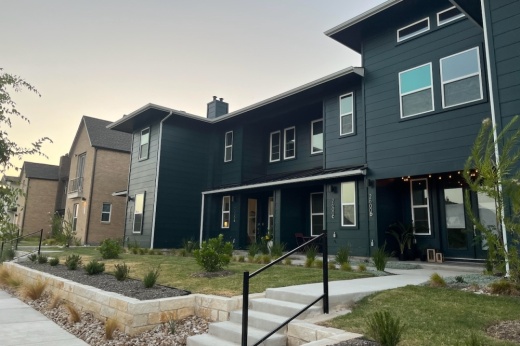The background
Today, Austin's land use rules mandate most new homes, ranging from single-family residences to townhomes and duplexes, can only be built on pieces of land that are at least 5,750 square feet or larger. For the lowest-density “large lot” zoning designation, that lot size minimum is 10,000 square feet.
Additionally, city code caps the number of homes in areas zoned as single family at two units, regardless of lot size.
Noting such regulations are “not conducive to smaller-scale homes” and out of line with how many other cities treat their housing development restrictions, a new proposal from Council Member Leslie Pool could end up slashing Austin's minimum lot size and permitting three or more units per property. The changes are inspired by some of the unique zoning rules established for the Mueller neighborhood, which features smaller homes and townhouses allowed under its redevelopment master plan.
Pool said the change would open up Austin's existing neighborhoods for a wider variety of housing types, allowing smaller and potentially more affordable spaces to be mixed in with larger higher-value homes amid a reported drop-off in middle-class homeownership.
“The whole process is to create options for the middle-income households for gentle, incremental change,” Pool told Community Impact. “That would add more neighbors; it would preserve the style and character of neighborhoods; it would continue attendance levels that are necessary for healthy public schools.”
The details
If the changes are enacted, housing such as triplexes or townhomes could be built on lots that are considered too small to contain even one single-family house. Residents could eventually see more housing types citywide as most land is zoned for single-family use.
Pool said her focus is on saving middle-class Austinites resources when trying to find or build an affordable place to live.
“By removing the time and cost barriers of having to petition the city to build another unit on your property that is more than what the code allows seems like a beautifully elegant solution,” she said. “My hope is in bringing this, it will allow neighborhoods to remain intact, that in fact you won’t have to monetize your home and move out of town because you can’t afford to live in your neighborhood anymore for whatever reason.”
Pool also said the changes are an alternative to selective upzoning in Austin neighborhoods, a process she called “piecemeal and polarizing” with particular downsides for places at risk of gentrification.
If the measure is approved, city staff will be tasked with figuring out the right balance for the changes. Pool's resolution calls for:
- Reducing Austin's single-family minimum lot size from 5,750 to 2,500 square feet or less—staff would come up with a final figure—allowing existing lots to be divided up into smaller parcels
- Bumping up the unit cap per single-family lot from two to three or more
- Creating a new three-family residential use to bring more “flexible housing configurations” to single-family areas
While calling it a “fairly straightforward” way to cut costs and allow more families access to Central Austin neighborhoods, Pool also noted her item includes a review of possible “unintended consequences” before any changes go into effect.
“I know we are on the right track in moving forward on some changes to the land development code that will really make a difference for folks,” she said. “They won’t hurt people, I think, on balance. These will be positive changes when we get to the final document.”
Pool's item is lined up to pass July 20 with initial co-sponsorship from Mayor Kirk Watson and Council Members Paige Ellis, Chito Vela and Zo Qadri as well as support from Council Member Ryan Alter, who has said he plans to vote in favor. Following the analysis by city planners, the concept could return to council for final approval later this year.
Local leaders' push to reduce Austin's residential lot size limits comes soon after state lawmakers attempted a similar move that could have gone even further.
In line with a series of proposed legislation drafted this year to override individual cities' rules on a variety of topics, bills filed in the House and Senate would have enacted a 1,400-square-foot minimum lot size for all of Texas. However, neither measure ended up passing before the end of the regular legislative session this spring.





